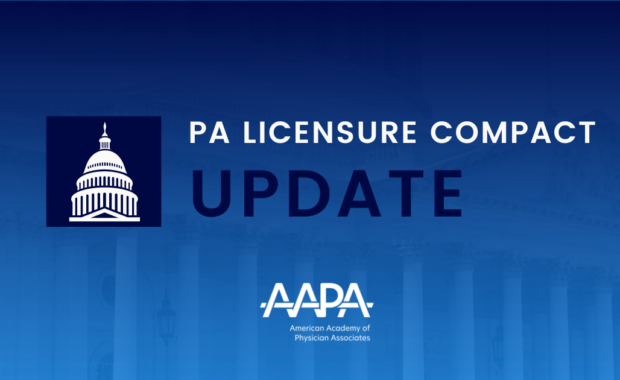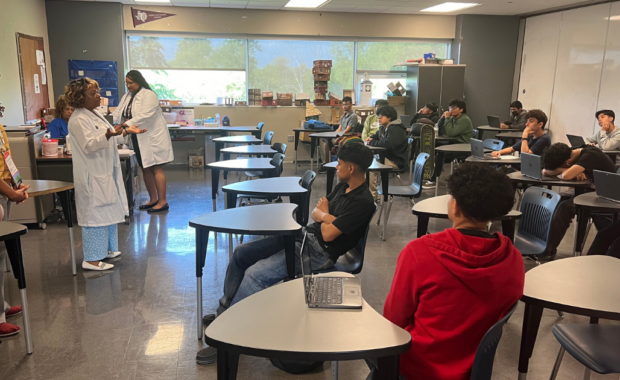Urgent Care, a Fast Growing Specialty for PAs and Physicians
PAs a Good Fit for Urgent Care Centers
February 9, 2018
By Noël Smith, MA, and Tamara S. Ritsema, MMSc, MPH, PA-C/R
Models of Urgent Care
Urgent care medicine is the “provision of immediate medical service offering outpatient care for the treatment of acute and chronic illness and injury”.1 PAs in urgent care should have a vast array of clinical skills as well as the ability to quickly identify patients who require more intensive emergency medicine services. While urgent care providers may also be the first to diagnosis chronic diseases such as diabetes or asthma, they generally refer patients to a primary care provider for the management of these conditions.
There are several models of urgent care practice; the most common is a free-standing urgent care center. Some PAs practice urgent care within a primary care office while others practice urgent care within an emergency department, with some seeing only urgent care patients, while other PAs practice full-spectrum emergency medicine. Because of the overlap with emergency medicine, we will take a look at PAs both in urgent care and in emergency medicine to better understand how their professional experiences may differ.
PAs in Urgent Care and Emergency Medicine
While the percentage of PAs who practice emergency medicine is relatively unchanged since 1998 at around 10% of all PAs, the percentage of PAs who chose urgent care as their practice setting has doubled during that time. Between 2% and 4% of all PAs worked in an urgent care setting throughout the 1990s and 2000s. However, beginning in 2014 these numbers increased above 5% and in 2016 6% of PAs reporting working in an urgent care setting.2
| Table 1. Characteristics of PAs in Urgent Care and Emergency Medicine in 2016 | ||||
| Urgent Care | Emergency Medicine | |||
| N | % | N | % | |
| Gender | ||||
| Male | 142 | 33.7 | 286 | 47.4 |
| Female | 279 | 66.3 | 317 | 52.6 |
| Length of PA Career | ||||
| 0 to 1 year | 48 | 14.1 | 50 | 9.9 |
| 2 to 4 years | 74 | 21.7 | 103 | 20.4 |
| 5 to 9 years | 60 | 17.6 | 127 | 25.2 |
| 10 to 14 years | 45 | 13.2 | 77 | 15.3 |
| 15 to 19 years | 32 | 9.4 | 55 | 10.9 |
| 20 or more years | 82 | 24 | 92 | 18.3 |
In terms of specialties, in 2016, PAs who practice emergency medicine are significantly more likely to be male compared to PAs in urgent care (47% and 34% respectively). More than 30% of PAs who practice emergency medicine graduated from PA school less than 5 years ago compared to 36% of those who practice urgent care (Table 1).
PAs in urgent care work see more patients per week (100) for their primary employer than those in emergency medicine (70) and spend significantly less time consulting with physicians about the care that they provide (5%) than those in emergency medicine (10%). Despite seeing more patients and having more autonomy, PAs in urgent care received lower compensation ($104,500) than PAs in emergency medicine ($110,000) (Table 2).
| Table 2. Employment Characteristics of PAs in Urgent Care and Emergency Medicine in 2016 | ||||
| Urgent Care | Emergency Medicine | |||
| N | Median | N | Median | |
| Hours per week | 292 | 40.0 | 434 | 37.0 |
| Patients per week | 293 | 100.0 | 421 | 70.0 |
| Percent of clinical time spent consulting w/ collaborating physician (%) | 286 | 5.0 | 411 | 10.0 |
| Base salary ($) | 200 | 104,500 | 216 | 110,000 |
| Base hourly wage ($) | 210 | 58.00 | 385 | 65.00 |
| Bonus ($) | 189 | 5,000 | 325 | 7,000 |
The Future of Urgent Care
Urgent care is a fast-growing setting for both PAs and doctors in clinical practice. The American Academy of Urgent Care Medicine reported a 16% increase in the number of urgent care centers in the United States between 2008 and 2016.3 They report that less than one-third of primary care practices offer after-hours coverage for their patients and while the number of emergency departments is decreasing, the number of visits for emergency care is increasing.4 Along with the strong financial incentives from insurance companies for patients to go to urgent care centers rather than emergency departments, there is an increasing demand for urgent care services.5 From a clinical services point of view, PAs are a good fit for urgent care centers with their generalist medical training. Financially speaking, including PAs as an integral team member in urgent care centers also makes sense as PAs are typically paid less than half of doctors and urgent care centers are often for-profit businesses.6
For More Resources
AAPA Insurance Services
In AAPA’s Career Central, find the practice resources you need today – and the ones you may need tomorrow. Like a free consultation from a trusted malpractice and medical liability insurance provider, AAPA Insurance Services. Powered by CM&F, this provider has protected PA careers for more than 30 years. Begin this important conversation today!
Solve that medical mystery
Start with the effective clinical tools in Career Central. Search the latest clinical findings in UpToDate. Look up medication dosages in OvidMD. Communicate effectively with your Spanish-speaking patients using Canopy Learn, the NIH-supported medical Spanish course. They’re all available at special AAPA member rates, and some are free! Begin improving patient care today – find these tools in Career Central.
References
1 Definition of Urgent Care Medicine [Internet]. [cited 2017 Jul 12]. Available from: http://aaucm.org/about/urgentcare/default.aspx
2 AAPA. 2017 AAPA Salary Survey. Unpublished data.
3 Future of Urgent Care. Available from: http://aaucm.org/about/future/default.aspx
4 Institute of Medicine. IOM Report: The Future of Emergency Care in the United States Health System. Acad Emerg Med. 2006 Oct;13(10):1081–5.
5 McNeeley S. Urgent Care Centers: an overview. Am J Clin Med. 2012;9(2):80–1.
6 Hollander JE, Pines JM. Urgent Care Centers: an alternative to unscheduled primary care and emergency department care. In: Value and Quality Innovations in Acute and Emergency Care. 1st ed. Cambridge, United Kingdom: Cambridge University Press; p. 118–30.
Authors
Noël Smith, MA, is Senior Director of PA and Industry Policy and Analysis. Contact Noël at [email protected].
Tamara S. Ritsema, MMSc, MPH, PA-C/R, Assistant Professor of Physician Assistant Studies, The George Washington University. Contact Tamara at mailto:[email protected].
Thank you for reading AAPA’s News Central
You have 2 articles left this month. Create a free account to read more stories, or become a member for more access to exclusive benefits! Already have an account? Log in.



